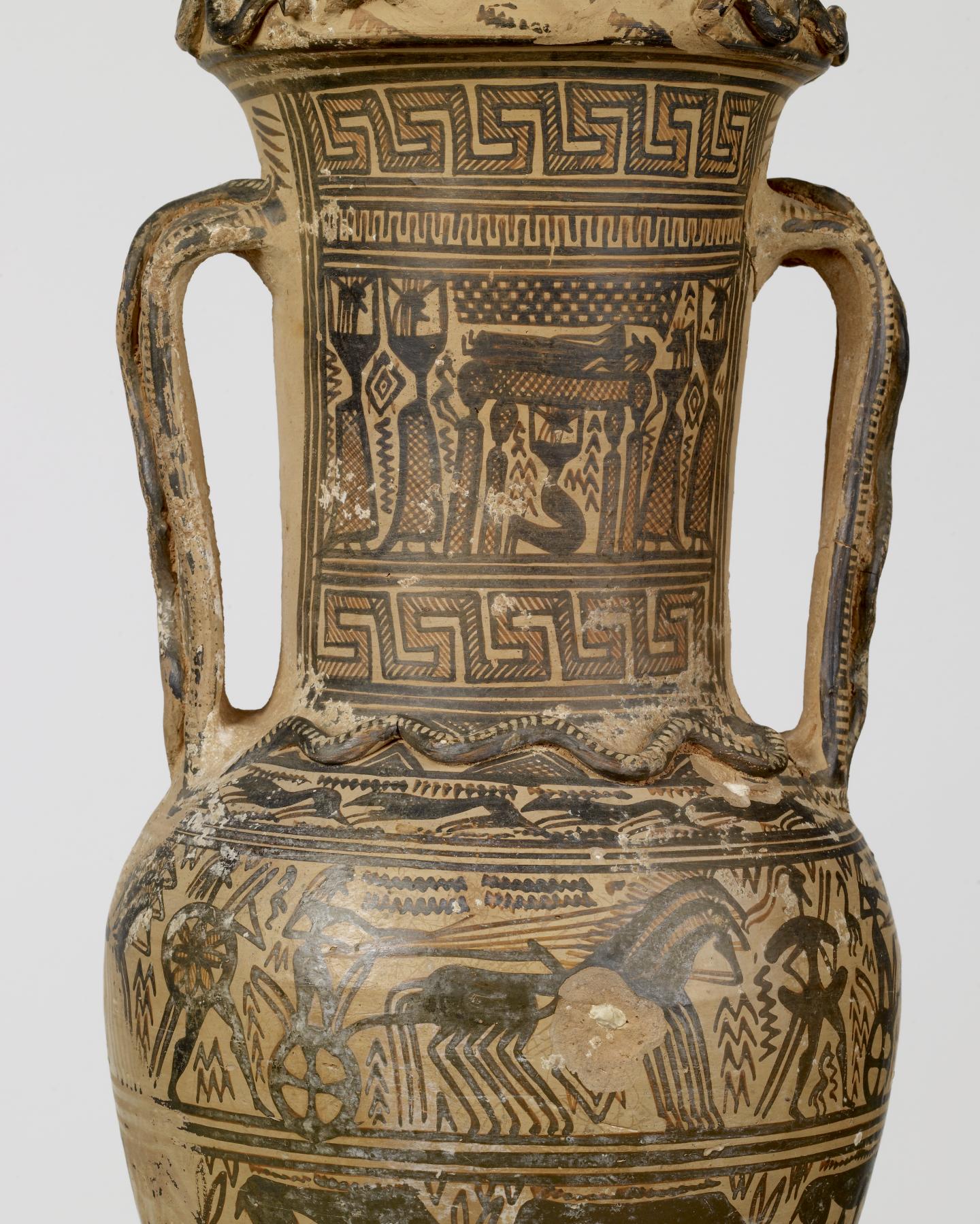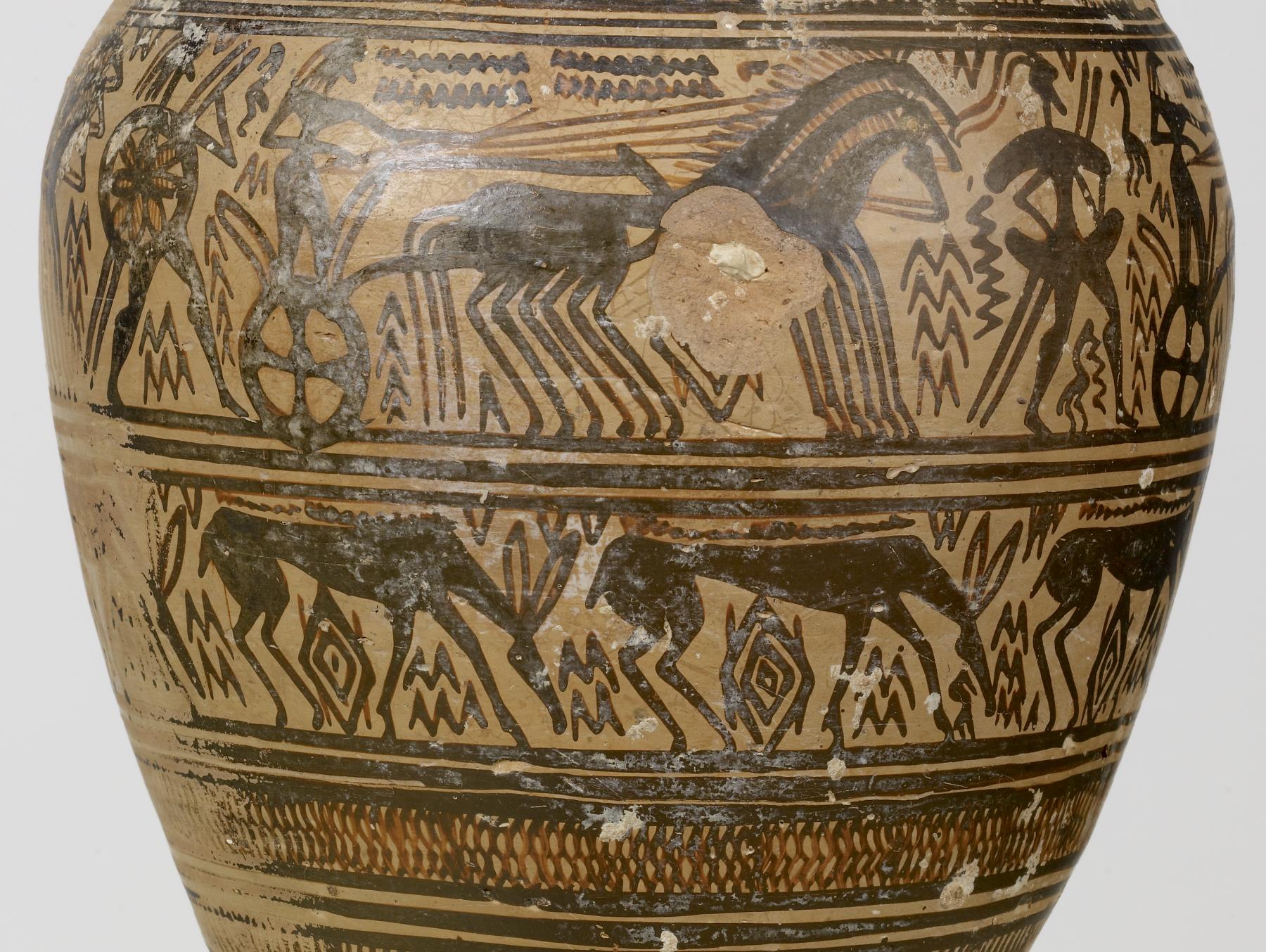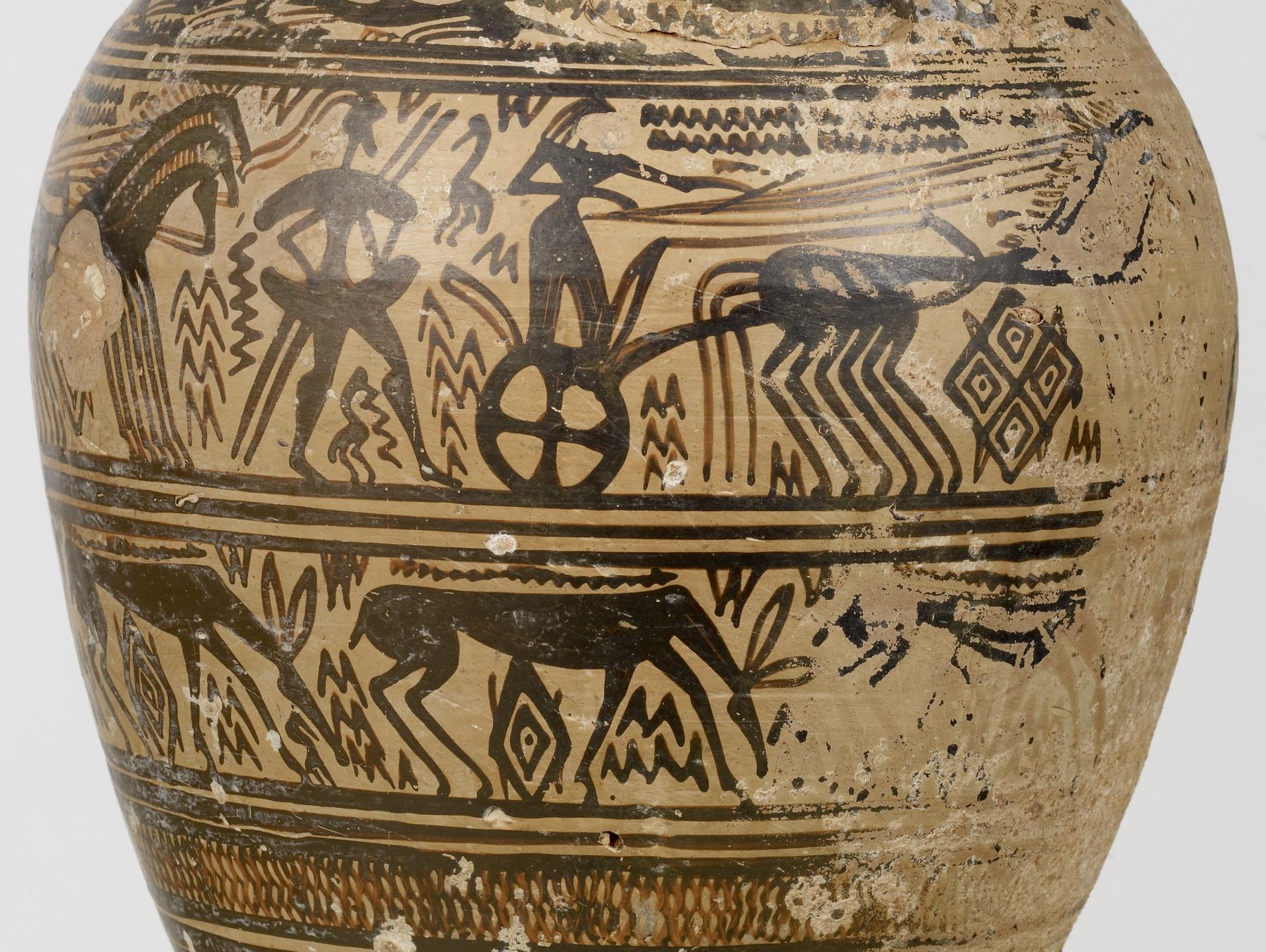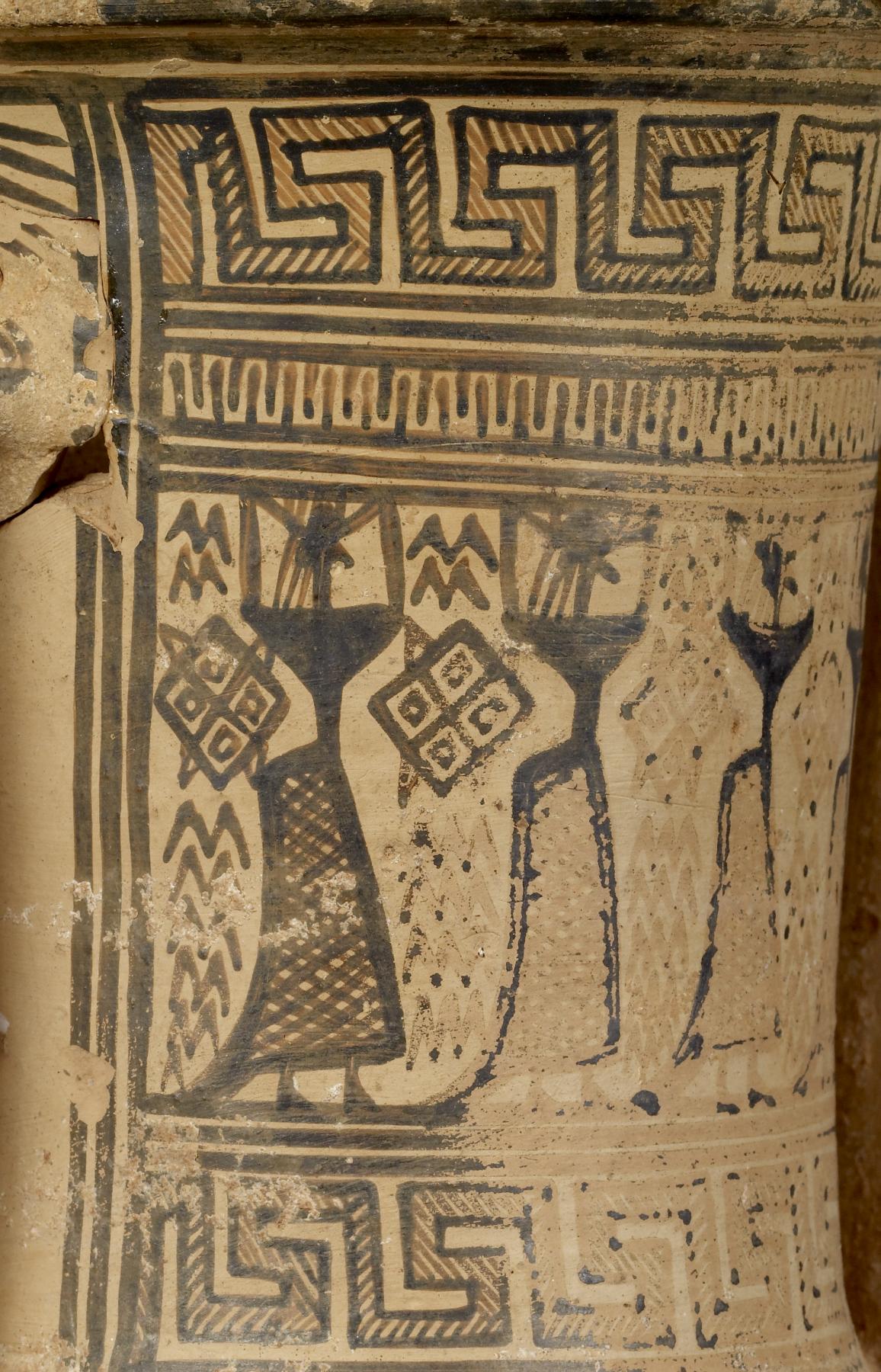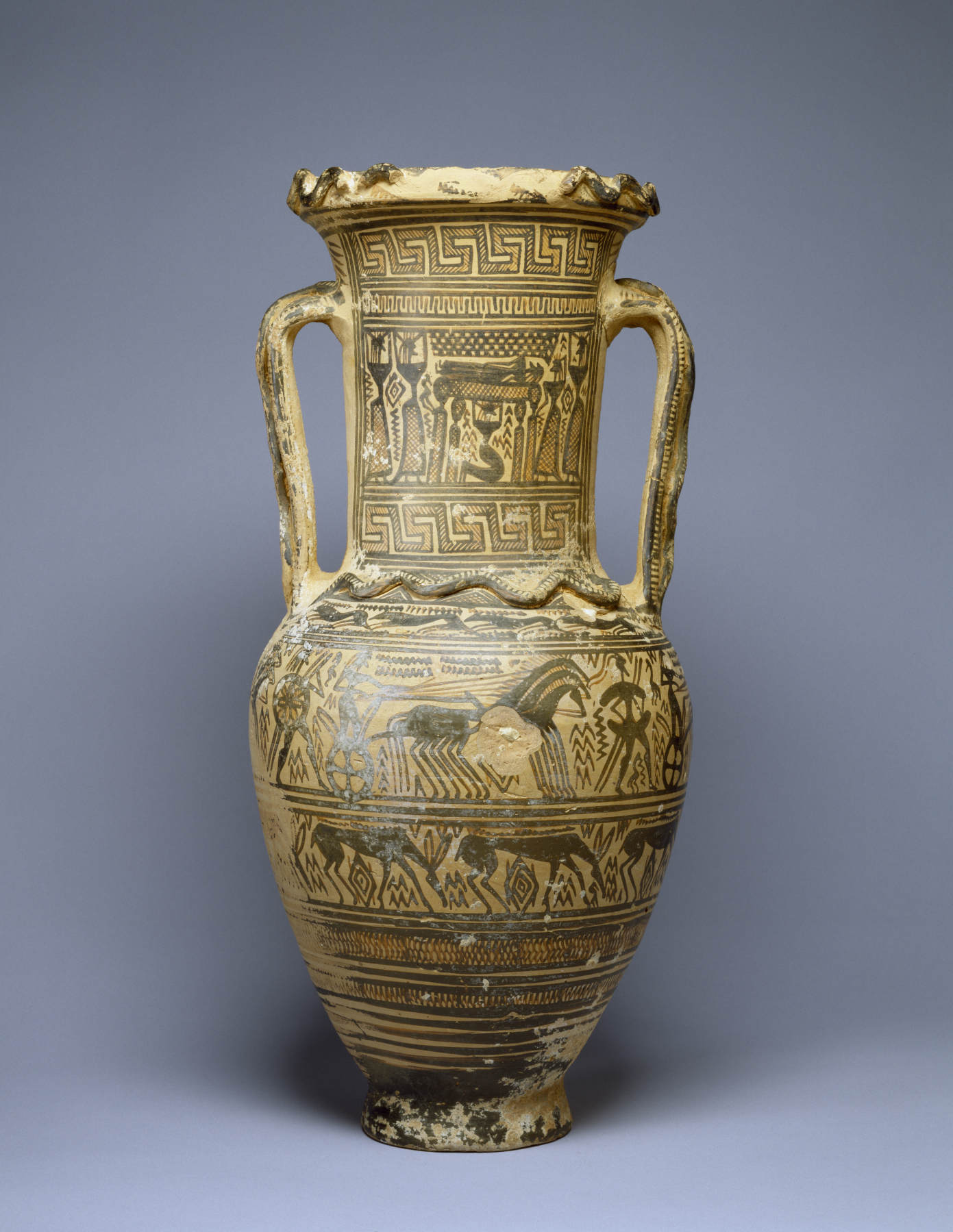Amphora with Funerary Scenes
(Ancient Greece )
An "amphora" is a two-handled vessel used to store wine, oil, honey, or grain. Vases such as this one, however, were made to be buried in tombs and depict moments in the funerary ritual. On the neck, the deceased is laid out on the funeral bier, with the checkered shroud raised to reveal the body. The couch is surrounded by women who tear at their hair in grief. Around the body of the vase, a procession of chariots and warriors moves to the right. A narrow band of running dogs appears above, and a band of grazing deer below. Clay snakes were modeled separately and applied to the mouth, handles, and shoulder of the vase, emphasizing their funerary role as guardians of tombs.
Provenance
Provenance (from the French provenir, 'to come from/forth') is the chronology of the ownership, custody, or location of a historical object. Learn more about provenance at the Walters.
Lagunillas, Havana, 1956; Ars Antiqua Auction, Lucerne, 1961; Walters Art Museum, 1961, by purchase [William H. Schab, New York, as agent].
Exhibitions
| 1978 | In Search of Ancient Treasure: 40 Years of Collecting. The Walters Art Gallery, Baltimore. |
Geographies
Greece, Athens (Place of Origin)
Measurements
20 3/16 x 9 7/16 in. (51.2 x 24 cm) (h. x diam.)
Credit Line
Museum purchase, 1961
Location in Museum
Accession Number
In libraries, galleries, museums, and archives, an accession number is a unique identifier assigned to each object in the collection.
In libraries, galleries, museums, and archives, an accession number is a unique identifier assigned to each object in the collection.
48.2231





